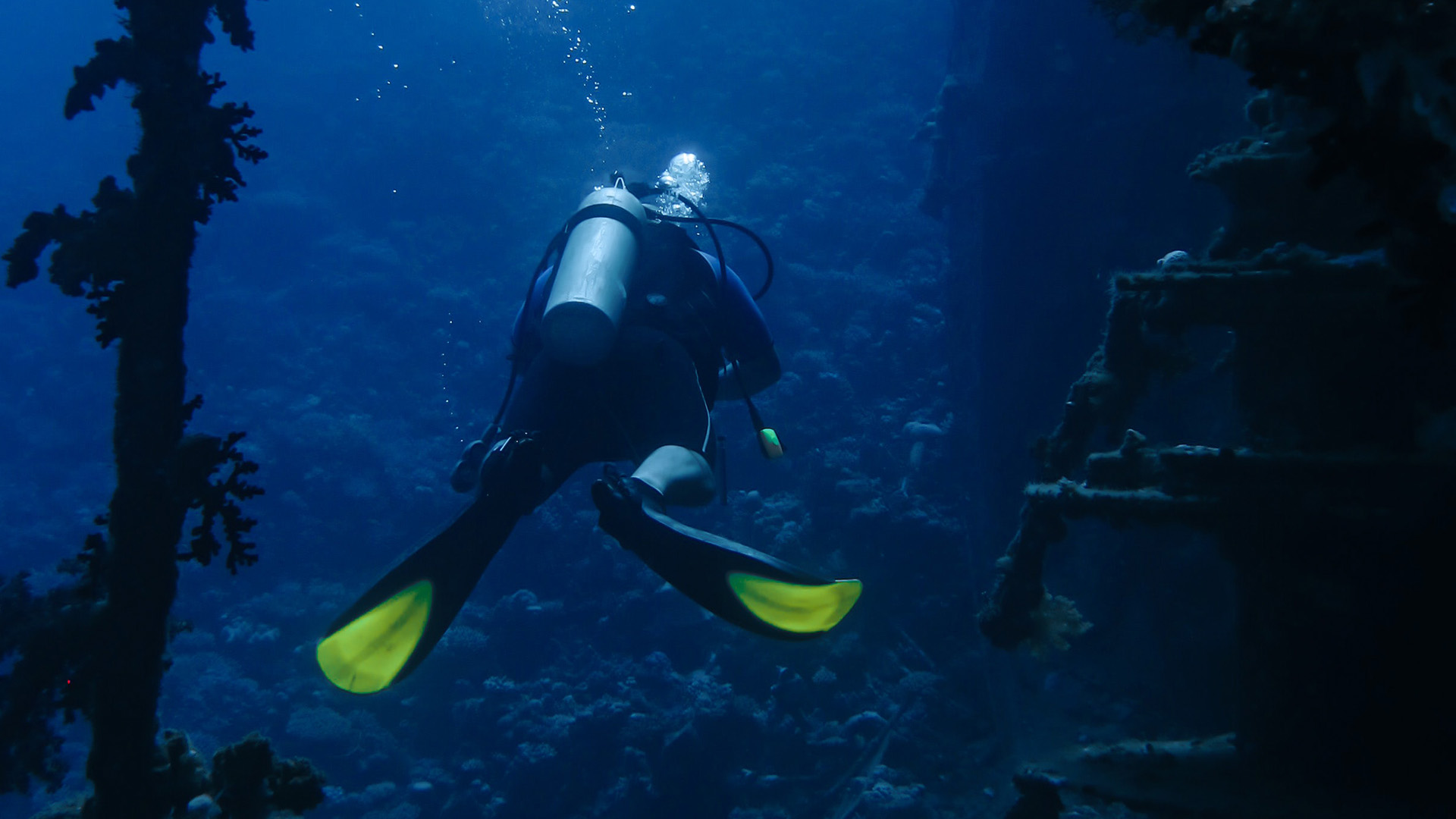by GILBERT “BUD” SCHILL
At dawn on June 28, 1993, I drove from my home in Richmond, Virginia to Norfolk, and went down to one of the docks with 40 or so others to await the arrival of a particular ship. It was sunny and hot, and we were all uncomfortable, as there was nowhere to sit and most of us were wearing business attire. We learned the ship would be a couple of hours late, but we stood there waiting, because we knew what we were about to see would be historic and, in my case, because several of my professional colleagues had been involved in the proceedings that led to the event.
In late morning, the research ship, Nadir, arrived to the cheers of the dockside observers. We watched with awe as the vessel’s crew and others unloaded its precious cargo, including a massive ship’s whistle that had once been perched high atop a much larger craft.
The maiden voyage of the great and luxurious White Star Royal Mail Steamer RMS Titanic began in Southampton, England, on April 10, 1912. After stops in Cherbourg, France, and Queenstown, Ireland, the huge ship (the length of three football fields and eleven stories high) headed for New York City across the North Atlantic, where it collided with an iceberg on the night of April 14 and sank to a depth of 12,415 feet at about 2:20 a.m. on April 15.
The general situs of the wreck had been known for decades, but the exact spot was located in 1985 through collaboration by the United States and France, aided by several scientific organizations, such as the Woods Hole Oceanographic Institute. Following that, there were multiple efforts to be the first to go down and retrieve items of monetary or historic value.
Oversimplified, when artifacts are retrieved from a sunken vessel in international waters, the country to which the first item is taken has jurisdiction over the vessel and all its contents. If there is litigation during or following the salvage, it is that country in which the litigation is venued. And within the United States, it is the state to which the first item is brought that has jurisdiction, to the exclusion of other states.
The first salvage operation to retrieve anything from the sunken vessel was conducted by Titanic Ventures Limited Partnership, which morphed into a corporation known as RMS Titanic Inc. The first salvaged items to reach the United States (including an engraved wine decanter) came to shore in Norfolk in 1992. Thus, Virginia had jurisdiction over Titanic and its contents.
That didn’t stop a cameraman on the early Nadir crew from conveying a pill bottle and hull shavings to some folks in Texas, who then proceeded to claim the wreck. The Texas group dispatched a ship to Titanic’s wreck scene, only to be turned around by order of a federal judge in Norfolk, who declared RMS Titanic the “salvor in possession,” with the exclusive right to conduct the retrieval operation.
RMS Titanic asked one of my law partners (himself a future Norfolk judge) to make a dive to Titanic, which he did. After taking a fishing trawler from the island of St. Pierre to Nadir, he went down with two French technicians in the untethered submersible Nautile. Before this tiny titanium tube submerged, there had been trips by tethered, remotely operated vehicles. But out of fear those vehicles would be too destructive to the scene, it was decided much of the delicate retrieval operation would be conducted from Nautile using a basket and mechanical arms. The descent took about one-and-a-half hours and the ascent about two hours. Nautile was on the ocean floor for about seven hours, filming and scooping up artifacts.
My partner returned to Norfolk while Nadir stayed on site for more salvage operations. He stood with his proud colleagues and others on the waterfront as the salvage ship entered the port, carrying the whistle from Titanic and crates of artifacts retrieved from the ocean floor. Just watching the crane hoist the enormous whistle onto the loading dock was a special privilege, particularly while listening to a band play “Nearer, My God, to Thee,” which Titanic’s band had reportedly played as the doomed ship went down 81 years earlier.
Some of us, along with city dignitaries and the Nadir crew, convened for a luncheon that day at a waterfront hotel, hosted by Norfolk’s mayor. Toward the end of that event, the audience was treated to remarks by George Tulloch, who had led the salvage expedition. Paraphrasing from memory, the closing of those remarks went something like this:
You would think that with all these artifacts from what might be the most famous shipwreck in world history, we would be keeping these items in our homes so we can brag about them and pass them down to our heirs. But that’s not going to happen. None of these items will be privately owned. They’re all going into museums for the rest of the world to see.
Except for one.
He reached in his jacket and pulled out a pocket watch.
I found this watch at the bottom of the ocean. I saw that it was engraved. It had been carried onto the ship by Bertram Frank Dean, who had his family with him, including his two-month-old daughter, Millvina, who, with her mother and sister, survived the sinking. Mr. Dean perished. I have done some research and located Ms. Dean, now 81 years old, who lives in Brighton, England. After lunch today, I’m going to fly to London, drive to Brighton, and take this to her.
Because I want her to have this.
The room was silent. No one could speak, not even Tulloch’s employees who suspected his plans.
To this day, I cannot describe this event without choking up.
Sixteen years later, in 2009, Millvina Dean died, having become the oldest living survivor of the tragic sinking of the most well-known vessel since Noah’s Ark.
My colleagues continued to represent RMS Titanic for the next decade and beyond and participated in a trial that resulted in the largest salvage award in U.S. history.
In my car on the way back to Richmond on June 28, 1993, I was haunted by Mr. Tulloch’s words in explaining his anticipated visit to Brighton. There was something familiar in the phrasing: “I want her to have this.” Then it dawned on me. When I was a kid in about 1958, the grandmother of a close friend had overheard me saying I had a collection of old knives. She handed me a pen knife and explained it had been in her pocket when she exited the sinking Titanic in a lifeboat after midnight on April 15, 1912. As she put the knife in my hand, she said, “I want you to have this.” Although I appreciated the generosity, I didn’t appreciate its historical significance for 35 years. It took me a few more years to locate the knife, which had gravitated into the possession of one of my adult children. I told the donor’s grandson I wanted him to have it, so I retrieved it and gave it to him.
Bud Schill is the author of three stories that have appeared in Y’all: “Thank You for Saving My Mother’s Life,” “Munny Talks,” and “Bet Y’all Wonderin’ Why I Just Done That.” A graduate of the University of Virginia School of Law, he has practiced law in Richmond, Virginia, since 1971, representing colleges and universities throughout the South, as well as teaching at Washington & Lee University School of Law. He has served as an editor of several historical publications and has co-authored a humorous and nostalgic collection of boyhood memories, Not Exactly Rocket Scientists and Other Stories. In the queue for publication is a follow-up book of similar stories, entitled Not Exactly Rocket Scientists II: The Totally Unnecessary Sequel. One of the co-authors of both books is another Y’all contributor, John W. MacIlroy.





